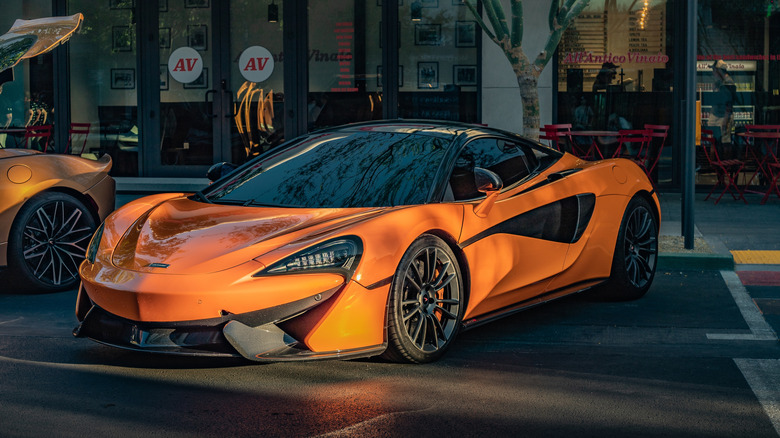
Lawrence Carmichael/Shutterstock
From 2015 to the present day, one car has risen above them all to become the de facto ultimate American muscle car, and the only one to still carry that torch to the present day: the Hellcat. In truth, the Hellcat moniker has appeared on several vehicles, and the powertrain has powered various other models under the Stellantis roof (perhaps a few too many). Still, Hellcat is a word that enthusiasts associate with the ultimate muscle car.
Advertisement
While the Camaro and the Mustang were too busy becoming all-out sports cars, the Hellcat remained true to its muscle car roots, with a big powerful, supercharged V8 engine, RWD, and handling that inspires fear, rather than confidence. Throw in lots of wheelspin and a curb weight that would embarrass city buses, and you have the ultimate recipe for the quintessential muscle car of the past decade.
The Hellcat started with 707 hp back in 2015, and by the end of the run, Dodge managed to squeeze over 1,000 hp from it. However, while the Hellcat’s performance is very impressive, it’s time to face reality: There are other cars that simply do it better.
Audi RS6 Avant
After decades of gatekeeping its entire RS lineup from North American buyers, and then teasing them a little bit with the RS3, Audi returned with a vengeance at the beginning of the 2020s with the RS6 Avant. The latest generation of Audi’s long-running midsize performance sedan is, in a lot of ways and for a lot of people, the only car that needs to exist.
Advertisement
Thanks to AWD and chassis engineering of the German variety, the RS6 Avant can easily outrun a Hellcat, despite having way less power. The regular RS6 Avant and its 591 hp V8 can reach 60 mph in just over 3 seconds, beating the original Hellcat by more than half a second. Meanwhile, the RS6 Avant performance (in all-lowercase) and its 621 hp can reach 60 mph in around 3.3 seconds, which bests not only the original Hellcat, but also the 797 hp Hellcat Redeye.
That’s pretty impressive already, but it gets better. The RS6 Avant is, at the end of the day, also a station wagon. There’s plenty of room for five people on-board, and you can fit your and your entire family’s closet in the cargo area. What’s more, the RS6 Avant’s platform isn’t two decades old, which means much more modern components, better technology, and a whole other level of build quality. It’s more expensive, but you get what you pay for.
Advertisement
McLaren 570S
It’s okay if you don’t remember this entry-level McLaren from a decade ago — you wouldn’t be the only one. Back in 2015, McLaren decided to introduce a model to directly compete with stuff like the Porsche 911. The 570S sat below the 650S and eventually the 720S in the lineup.
Advertisement
While it had other variants that are even less remembered, the 570S was the most common one. Powered by the new and improved 4.0-liter twin-turbo V8, the 570S made 570 hp. Because it’s also RWD, you might think there’s no way it can be faster than the Hellcat or Hellcat Redeye, which have 137 and 227 extra horsepower, respectively.
Nope, the 570S gives the Hellcat a roundhouse kick, thanks in part to launch control, and, you know, way less weight. McLaren claims the 570S can rocket to 60 mph in just 3.1 seconds, which is over half a second faster than the Hellcat. The 570S also wins the top speed battle, topping out at 204 mph. Assuming the reliability issues are sorted, the 570S is actually a brilliant supercar that is definitely worth a canter through the used market.
Advertisement
Ferrari F12berlinetta
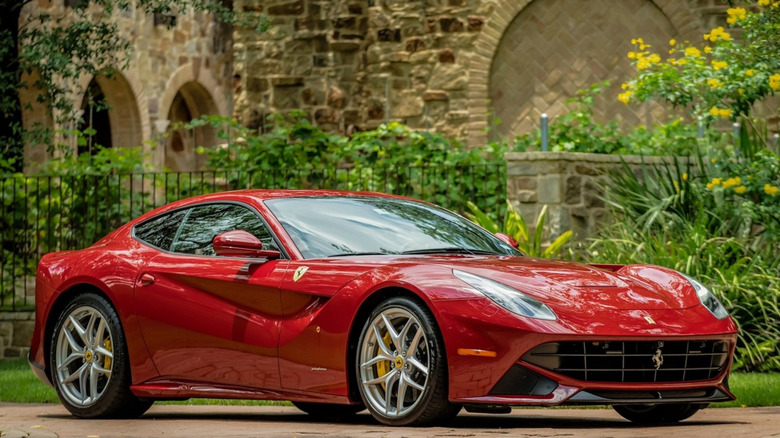
The Image Engine/Shutterstock
The F12berlinetta marked the end of an era back in 2013: It was the last front-engined V12 Ferrari to be designed by Pininfarina. Ferrari’s in-house design team penned the replacement, the 812 Superfast. The F12berlinetta was the replacement for the 599 GTB, and back then it was the ultimate expression of what Ferrari was all about.
Advertisement
A gorgeous exterior where beauty and aerodynamic functionality were in perfect harmony, a screaming 720 hp V12 under the hood, RWD, and a dual-clutch automatic transmission. This one isn’t just faster than a Hellcat, it’s also a little more powerful than the original 707 hp version of the muscle car.
But how much faster is it actually? Given the right circumstances, the F12 can reach 60 mph in 3 seconds or less. It’ll also sail way past the Hellcat flat out, with a top speed of 211 mph. Similar to the 570S, the F12berlinetta has lost a fair bit of value over the past decade, and it’s worth considering if you need to scratch that V12 Ferrari itch.
Ford GT
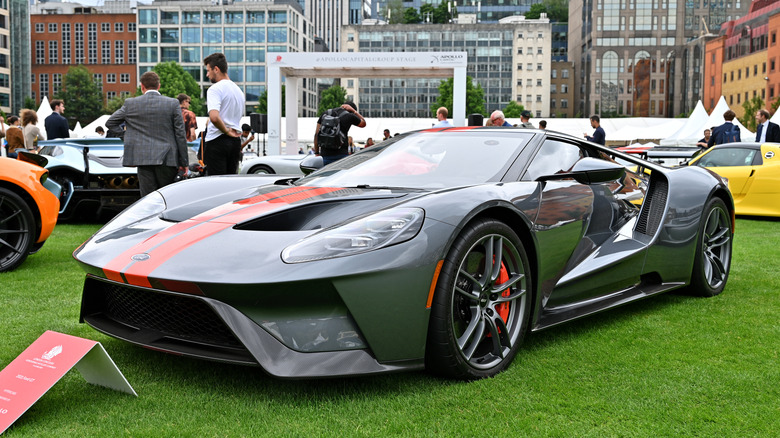
John Keeble/Getty Images
The original Ford GT was launched back in 2005, though it debuted a couple years prior to celebrate Ford’s 100th birthday. While it was a serious supercar, it took a more old school approach, and it was definitely made using what Ford had. You could also say the same of the second generation GT, but it was a completely different animal altogether.
Advertisement
Ford’s second generation GT laughs in the face of old school performance, with incredible aerodynamic achievements like the flying buttresses. People were quick to snub the original GT due to having «only a V6,» but this was anything but a normal V6.
Sure, you could get a similar 3.5-liter unit in an F-150, but in the GT it was all about performance. A lofty 617 hp combined with extraterrestrial aerodynamics propelled the second-gen GT to 60 mph in less than 3 seconds. Remember, it was still RWD. With a top speed of 216 mph, it would also leave the Hellcat completely trailing in its wake flat out. That’s not even the whole story, as the GT went out to prove that it can run rings around just about anything at the race track, Hellcat or otherwise.
Advertisement
Lamborghini Huracan
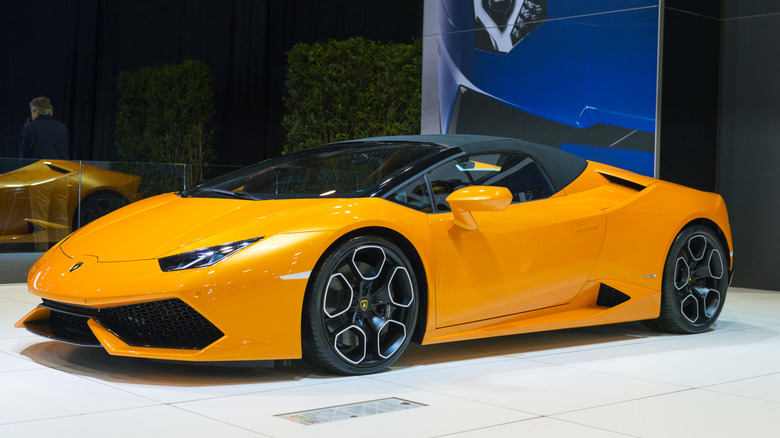
Sjo/Getty Images
After an entire decade of a brilliant V10 symphony, Lamborghini has called it quits on the Huracan. The replacement for the Gallardo arrived in 2014, using a fettled version of the same 5.2-liter V10 engine. From 2014 to today, there’ve been about 63 different versions of the Huracan, each more powerful and capable than the last.
Advertisement
Basically every Huracan is faster than a Hellcat in almost every aspect. The 5.2-liter V10 in the original made 602 hp, an improvement over the Gallardo’s 562. Thanks to AWD and a super quick dual-clutch transmission that replaced the controversial E-Gear, 0-60 mph in the Huracan is in the high 2 second range.
That means that even the original Huracan is almost a full second faster than the Hellcat in basically all its forms. The Huracan is also an absolute thrill ride, and while it doesn’t have any of the tire squealing, no-traction tomfoolery that the Hellcat offers, it’s a Lambo, so it’s pretty much guaranteed to put a smile on your face regardless. Especially if it’s a hopped up model.
Chevrolet Corvette E-Ray
It seems Chevy wasn’t content with going after only sports cars when it switched the Corvette to a mid-engine layout back in 2019, as its now going after the world’s supercars as well. The Z06 is for the track fiends, but there’s also now a totally new way to have a ‘Vette: the E-Ray.
Advertisement
The Corvette E-Ray represents two major firsts for the nameplate: It’s the first factory Corvette to come with AWD, and it’s also the first one with an electrified powertrain. The standard 6.2-liter V8 from the regular Stingray remains, but a small electric motor at the front axle joins in for a total system output of 655 hp.
Crazy to think that you can now buy a Corvette with the same power output as the original Koenigsegg CC8S. With all four wheels driven and with such a power figure, the Corvette E-Ray completes the 0-60 mph sprint in less than 3 seconds, actually closer to 2.5 seconds. You may lose the supercharger noises, but you certainly don’t lose the classic American V8 noises. The wider body on the E-Ray, shared with the Z06, is also a class act. In fact, during our first drive of the E-Ray we found the whole car is a class act.
Advertisement
Nissan GT-R
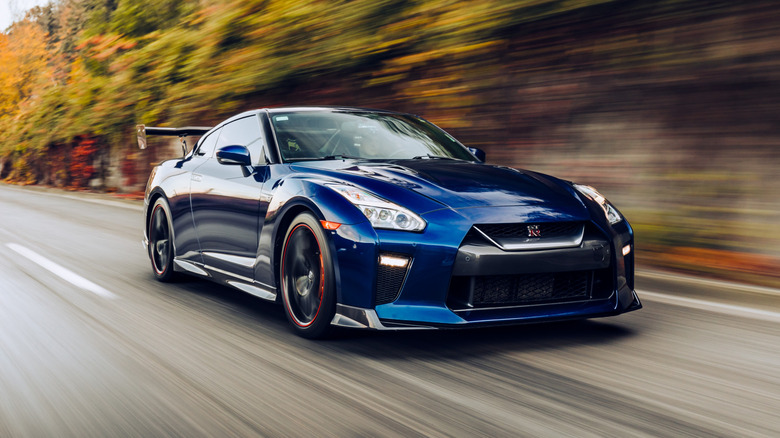
Brandon Woyshnis/Getty Images
After years and years of western audiences asking for it, Nissan finally introduced global markets to Godzilla with the R35 GT-R in 2007. It dropped the Skyline moniker reserved for the Japanese market, but make no mistake: The GT-R is part of the same family. Back in the day, the GT-R was often considered a supercar killer, despite only using a twin-turbo V6 and having a lot less power.
Advertisement
The original R35 GT-R had somewhere in the neighborhood of 500 hp, while the most recent one had a pretty meaty 565 hp. Thanks to AWD and the fabled launch control system, it’s quite easy to get an R35 to 60 mph in the high 2 second range, which easily bests just about every Hellcat model.
For as much as the GT-R has evolved over the years, this model is definitely showing its age. However, while the competition has managed to catch up, it shouldn’t take away from achievement that was the R35 GT-R.
Cadillac CT5-V Blackwing
While it is faster than a Hellcat, the CT5-V Blackwing is also very close to the Hellcat, in some ways. The Blackwing name was first used on the CT6 luxury sedan and its fascinating twin-turbo V8. Sadly, GM fumbled that whole idea, and began to just use the Blackwing name on its most powerful performance sedans, without the shared engine design.
Advertisement
The CT5-V Blackwing is the king of the hill in the V lineup, and it comes with a 6.2-liter supercharged V8 developing a monstrous 668 hp. All of that goes to the rear wheels, by the way, and you can have either a 10-speed automatic or a standard-fit six-speed manual. The V8 in the CT5-V Blackwing is actually quite similar to that of the Corvette C8’s powertrain, continuing the tradition of Cadillac V sedans using Corvette power.
Compared to the regular Challenger Hellcat, the CT5-V Blackwing bests its 0-60 time by two tenths of a second, taking 3.4 seconds to achieve the speed according to Cadillac. Despite their similarities, the CT5-V is faster, and also more luxurious, more comfortable, more modern, and more practical. Plus, again, you can go and buy one right now.
Advertisement
Audi RS3
Hot hatchbacks have gotten so fast nowadays, we should start calling them fire-hazard hatchbacks — that is certainly the case with the latest Audi RS3. Despite even more crackdowns on emissions, Audi insists on keeping the five-cylinder engine in the RS3, making it the only current production car to have one.
Advertisement
And what an engine it is. The latest RS3’s power and performance is ridiculous, excessive even for a hot hatchback. As part of a recent facelift, Audi introduced the RS3 performance, which squeezes 401 hp from the 2.5-liter TFSI. 401 hp, people, in a hot hatchback. That’s more than the original Aston Martin V8 Vantage, in a car that shares most of its underpinnings with the VW Golf.
Thanks to Quattro AWD, the RS3 makes mincemeat of the Hellcat in the sprint to the magical 60 mph, taking just 3.3 seconds compared to the Hellcat’s almost pedestrian by comparison 3.7 seconds. Being a compact car, the RS3’s dimensions are also not a nuisance, and the smaller size and lighter weight figure also means much more agility.
Advertisement
Mercedes-AMG GT
The first generation Mercedes-AMG GT was a classic interpretation of the front-engine, RWD sports car. A big V8 in the front, RWD, and a gorgeous exterior to wrap it all up in. The latest second generation version of the AMG GT is much of the same, but now, Mercedes wants to make it a more serious performance car.
Advertisement
In top-of-the-line GT 63 guise, the AMG GT packs 577 hp from its 4.0-liter twin-turbo V8. That figure is similar to the previous AMG GT R, except now, the GT 63 comes standard with AWD. Mercedes also recently revealed the GT Pro, which offers up 604 hp from the same powertrain. The GT 63, according to Mercedes-AMG, can reach 60 mph in just 3.1 seconds. That makes it more than half a second faster than a Hellcat.
Along with the oodles of power and speed, the AMG GT also has style on its side once again. It’s a very attractive sports car, retaining the overall shape of the previous generation, while also being more modern and more in check with Mercedes’ current design language. We can all agree that it’s more luxurious and modern than a Hellcat on the inside, as well.
Advertisement